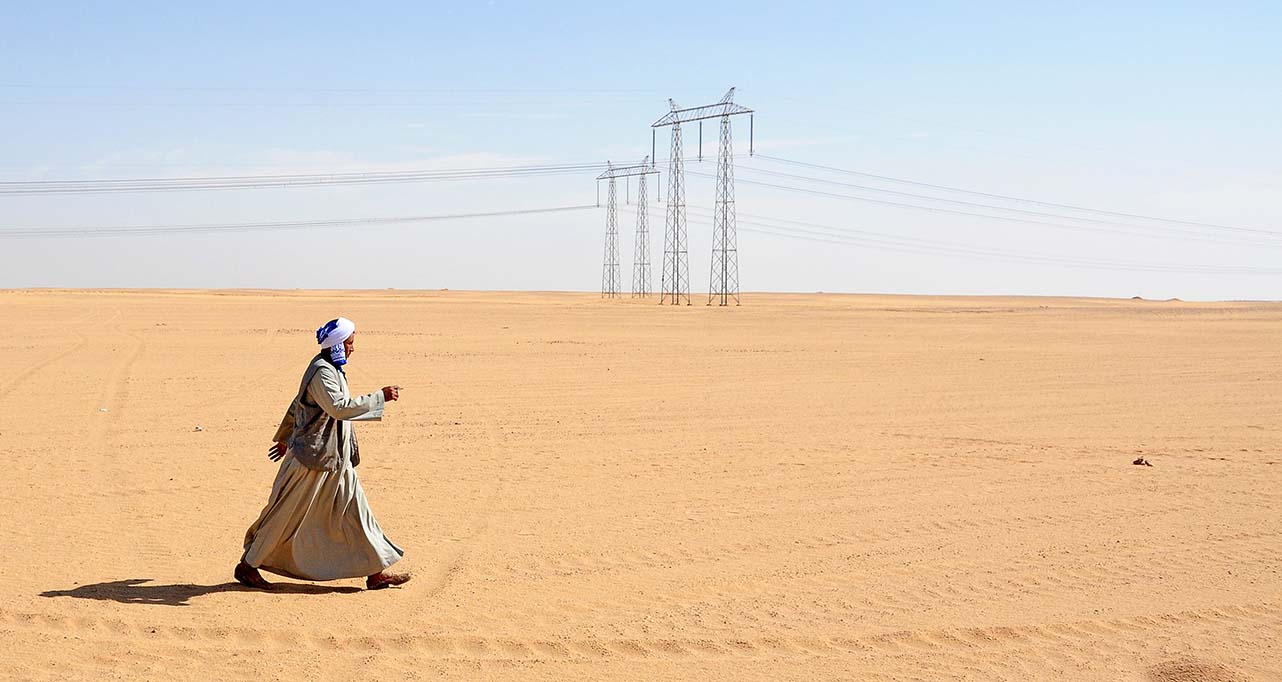Speech delivered by: Sir Manfred Schepers
Event: Central and Eastern European Forum
Date: 21 January 2009
It is always a pleasure for us to come to Austria, a country which has so many historic and present links with the region where the EBRD operates.
During the past decade, we were all working in this unique period after the Russian crisis of 1998, during which we experienced strong growth, integration and transition across the entire region.
Today central and eastern Europe are bearing the full brunt of the global financial and economic crisis. Now the question which is uniting us at this conference is: What can be done to mitigate the impact of the crisis and provide the impetus to help the region continue its path of stable and sustainable economic growth?
If I may put it in two words: a lot.
A lot needs to be done, but also a lot can be done - within each country in the region and also from outside; even if such an “outside” is licking its own wounds. Nobody needs to remind an audience here in Vienna of how interlinked and interdependent our world has become in recent years.
Growth in central and eastern Europe has considerably contributed to the economic well-being in western Europe. Therefore we at the EBRD strongly believe that it is in our common interest to find ways out of the present crisis.
Policies to address the crisis
Just like the crisis originates in the confluence of problems both at home and abroad, actions within the region and in international markets will be needed to resolve it. This should not just involve governments but importantly financial market regulators, international financial institutions such as the EBRD and most importantly the private sector participants such as you in the international banking and business communities.
What actions exactly are needed?
Containing the crisis requires prompt action by national authorities to maintain or re-establish confidence by stabilising the financial sectors. These measures include liquidity support to the banking system; recapitalisation of systemically important banks and strengthening the protection of depositors.
In this context the most important objective will continue to be the stability of the international banking system, thereby maintaining the solvency and liquidity of parent banks that own subsidiaries in our region.
Foreign ownership of large shares of the banking systems in central and eastern Europe has so far been a source of stability and, indeed, a critical reason for why the region has been relatively resilient.
While certain types of financial integration created problems for several countries - particularly those with banks that relied excessively on $ and € borrowing on international capital markets - other types have continued to be a stable source of finance and growth.
This crisis was not caused by market reforms, though overly rapid risk taking and balance sheet expansion by banks clearly played a key role. In particular foreign direct investment and the integration between foreign parent banks and domestic subsidiaries have provided stable capital flows to the region.
This stabilising influence must not be allowed to turn into the opposite.
Several factors give me confidence that the crisis in the region can be contained:
- First of all, the strength of public balance sheets of many countries in the region. Unlike in 1998, this crisis is not driven by unsustainable fiscal balances but primarily current account deficits. This is important, as in the long run it gives countries room for manoeuvre to help their financial sectors and broader economy, and also it implies that the prospects for regional recovery are greater once confidence has been restored and the international financial environment stabilises.
- Second, improved policy making institutions and legal frameworks, including those in the financial sector. Again, the region has made impressive progress in this respect, as documented, for instance, in the EBRD’s Transition Indicators. This means that the fundamentals for a return to sustainable growth remain in place. While a part of the boom in the region in recent years was clearly promoted by the benign global environment, a good part of it was the result of home-grown restructuring in the financial and industrial sectors.
- Third, the region is more interlinked and institutionally interwoven with the global economy than ever before – to say nothing about trade flows and business relationships. Today many of the countries of central and eastern Europe are members of the European Union, several have joined the eurozone and most are members of the WTO and have extensive trade relationships in particular with Europe and Asia.
- Fourth, the speed and decisiveness of policy responses. Policy makers are not waiting to see their financial systems or currencies collapse. Many have taken pre-emptive action and have engaged in dialogue with the IMF, the European Central Bank, the European Commission and other international institutions, including the EBRD.
The Role of the EBRD
Allow me in this context to say a few words about what steps the EBRD has taken in response to the crisis.
Like most people, we did not foresee the severity and the depth of the global economic crisis. Nobody did. But - taking into account the impact of the beginning recession in the west and vulnerabilities in the east - at the end of November our economists already projected a sharp decline in growth in the region from the near record rates of about 7 per cent in 2007 to below 2 per cent this year.
This aggregate figure includes considerable variations among groups of countries:
- Countries where growth will slow markedly, but is not expected to collapse. One such example is Poland, which is also helped by a big domestic market. Common characteristics are that external financing requirements are reasonably well contained as are the foreign liabilities of the banking sector. In many cases a flexible exchange rate has helped contain unhedged exposures in the private sector and may now smooth the adjustment to a much harsher economic climate.
- Other countries will see growth stopping without entering a deep recession. We still see, for example, Russia in this camp. Despite serious vulnerabilities the country has important buffers like the oil savings fund and the ability to further utilise the domestic financial market.
- Some countries in central Asia are somewhat more isolated from the global turmoil. Growth is yet resilient, though it will in the future be affected by second round effects such as the looming drop in workers’ remittances or reduced Russian outward investment and credit provision.
- Finally, a number of countries in the region have entered a recession or are about to do so. Latvia, Estonia, Hungary and Ukraine have all been hit hard, though to varying degrees. A key element is the role of the credit boom in recent years as recessions led by credit contractions will be deeper and longer than those driven by the economic cycle. A key factor for these countries going forward will be their ability to rely to a greater extent on local currency financing
Under these challenging circumstances the EBRD has moved swiftly and decided:
- To step up our business volume this year by over 20% per cent to €7 billion;
- To support sound banks in the region which are badly affected by the crisis on a case-by-case basis, encourage consolidation and provide equity and debt finance which is otherwise not available on the financial market;
- To significantly expand our trade finance programme and to set up a framework to provide working capital and additional capex finance to the corporate sector in close cooperation with international banks active in the region;
- And we have initiated a closer collaboration with other international institutions to ensure that we fully leverage and co-ordinate the available financial resources for the banking, SME and infrastructure sectors.
This approach has already produced results. In December alone, the EBRD provided significant equity and debt finance to banks in Romania, Ukraine, Russia and Georgia. Further projects in the banking sector are obviously being discussed as we are gathered here.
Ultimately, during this turmoil the EBRD’s goal is to help preserve and secure the impressive progress which has been made in the past years. We have the funds and instruments at our disposal, but this is a crisis which no country and no institution can solve on its own.
Joint IFI initiative
Therefore, the cooperation of international financial institutions plays a key role as we complement each other in the resources and instruments that can be provided. To give you one example: The IMF provides standby loans to governments, while the EBRD is a project-finance bank focussed on the private sector providing long term debt and equity finance.
But of course neither international institutions nor local liquidity facilities should supplant the role of the private sector. It is critical to now restore the vital credit and capital allocation functions of domestic and international banking and capital markets in the region.
We have to muster the collective effort to sustain private credit in the region – at a more prudent pace and in line with the new international context.
All actors need to be involved in this:
- Home and host Bank supervisors of bank groups that are active in the region need to develop closer coordination and avoid discriminatory measures that divert liquidity from one jurisdiction to another.
- Parent banks which have so far stood by their subsidiaries in the region will need to prepare themselves for potential further capital injections and debt refinancing as balance sheets may weaken further.
- Local central banks and regulators need to strengthen their efforts to re-open local currency funding sources, in particular in money and bond markets. These markets provide the backbone in the pricing of all financial assets and are much needed now that international liquidity has dried up and the risks to exchange rates have been evidenced across the region. Currently, macroeconomic imbalances are draining liquidity away from local markets. Once these are resolved regulations should be in place to support and prioritise the revival of local markets. Only then will we see sustainable monetary policies and current account balances.
- The international financial institutions must step up their support for the region. For its part, the EBRD has taken an active role in designing a coordination framework on how best to support local banking sectors. The key aim here is to revive the flow of credit to the real economy, in particular the small and medium-sized enterprise sector.
Conclusion
It is maybe the first time in living memory that the keynote address at this annual Euromoney conference does not end in the most upbeat outlook.
But the grim reality of today is not the full picture. Let us not forget that the region’s progress in the last 20 years has been truly impressive. Most goods and services are produced by the private sector and exchanged in well-functioning markets. Most countries are demonstrating continuing commitment to market reforms and democratic processes. A crisis can lead to reversals, but can also create new opportunities in healthier and stronger systems.
The EBRD is committed to be the catalyst in this process, but most importantly these opportunities must be grasped by the individual governments and the local and international private sector that during the past 20 years have already gained so much experience on how attractive these economies can be.
Thank you very much for your kind attention.



